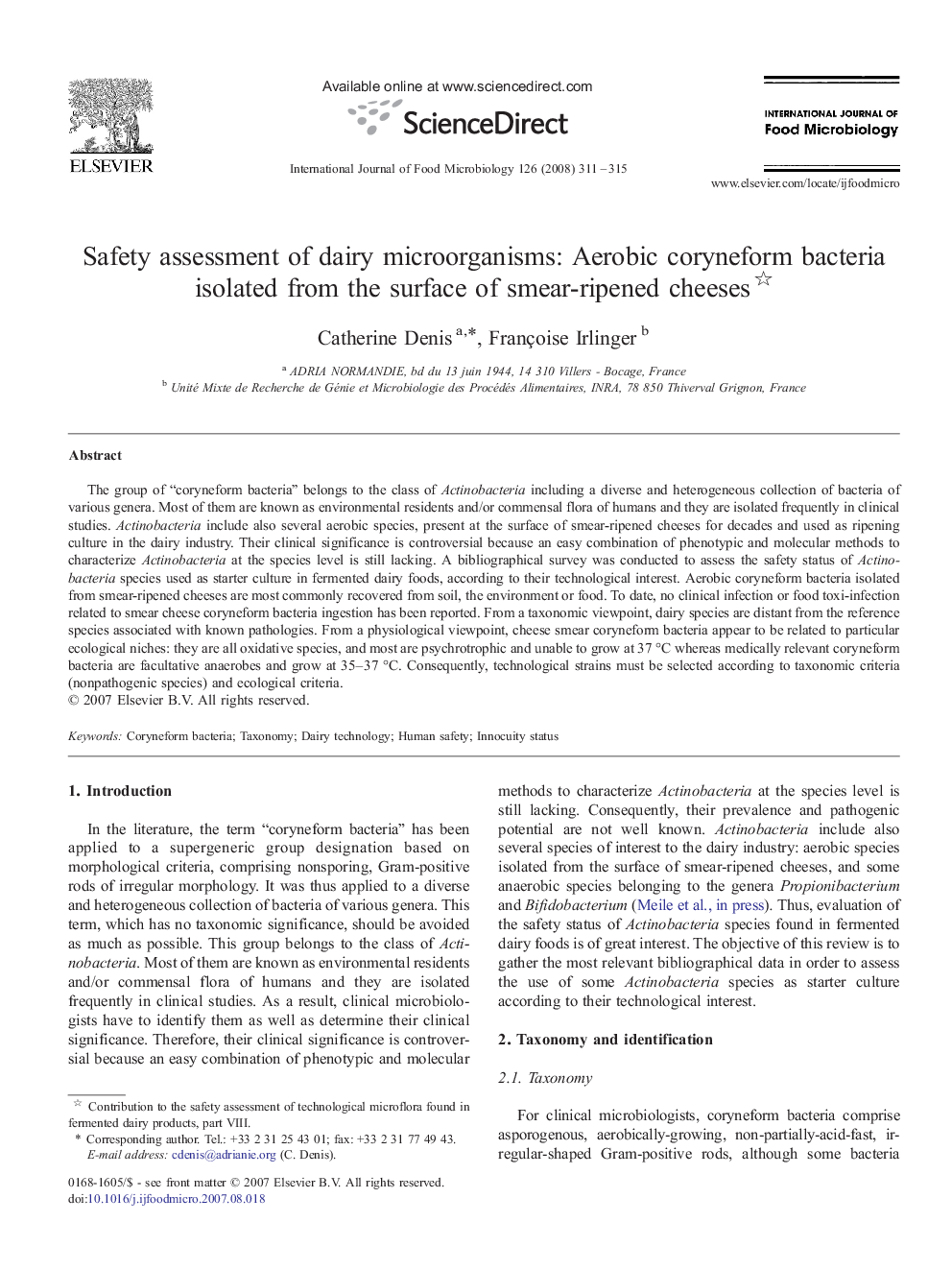| Article ID | Journal | Published Year | Pages | File Type |
|---|---|---|---|---|
| 4369968 | International Journal of Food Microbiology | 2008 | 5 Pages |
The group of “coryneform bacteria" belongs to the class of Actinobacteria including a diverse and heterogeneous collection of bacteria of various genera. Most of them are known as environmental residents and/or commensal flora of humans and they are isolated frequently in clinical studies. Actinobacteria include also several aerobic species, present at the surface of smear-ripened cheeses for decades and used as ripening culture in the dairy industry. Their clinical significance is controversial because an easy combination of phenotypic and molecular methods to characterize Actinobacteria at the species level is still lacking. A bibliographical survey was conducted to assess the safety status of Actinobacteria species used as starter culture in fermented dairy foods, according to their technological interest. Aerobic coryneform bacteria isolated from smear-ripened cheeses are most commonly recovered from soil, the environment or food. To date, no clinical infection or food toxi-infection related to smear cheese coryneform bacteria ingestion has been reported. From a taxonomic viewpoint, dairy species are distant from the reference species associated with known pathologies. From a physiological viewpoint, cheese smear coryneform bacteria appear to be related to particular ecological niches: they are all oxidative species, and most are psychrotrophic and unable to grow at 37 °C whereas medically relevant coryneform bacteria are facultative anaerobes and grow at 35–37 °C. Consequently, technological strains must be selected according to taxonomic criteria (nonpathogenic species) and ecological criteria.
